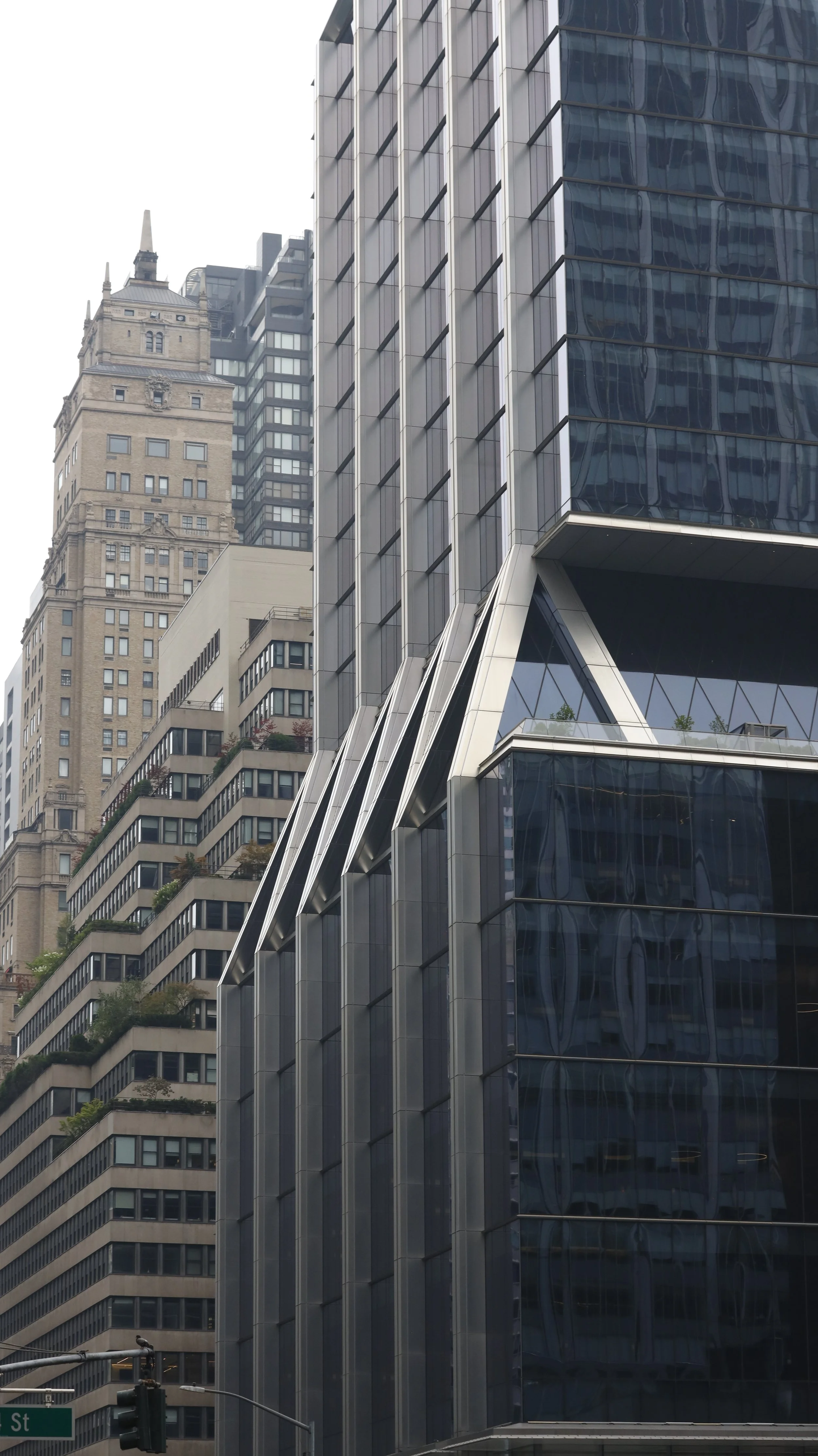445 Park Avenue
445 Park Avenue
Between 56th & 57th Streets, Manhattan
Tishman Building / Universal Pictures Building / MCA Building
When this 22-story, 287-foot tower opened in 1946, it signaled Park Avenue’s shift from a residential boulevard to a commercial artery. Kahn & Jacobs’ restrained modernism introduced the first post-war era office building on the avenue with efficiency and ingenuity. The ziggurat-shaped roof with four setbacks met the amended 1943 zoning regulation (reducing the first setback from 2x to 1.5x the width of Park Avenue) and filled every cubic foot of its “zoning envelope,” the buildable air space allowed. On the facade, strip windows run unbroken across masonry bands, maintaining harmony with the surrounding architecture. Entombed by this boxy character of International style is New York’s first fully air-conditioned office space, along with a new engineering approach designed to maximize the usage of the best natural-lit area around the perimeters by redirecting wind loads to structural columns further away from the exterior walls. Every floor was an open plan ready for custom partitioning—a powerful lure for post-war firms that expected to reconfigure quickly as markets shifted. Praised by Lewis Mumford as “the best answer yet to the year-round problem of lighting and heating,” this pragmatic, economically minded design was exactly what developer David Tishman wanted during a moment of post-war economic, political, and cultural transitions.
For decades the block had been high-society territory. The five- and six-story Kensington flats of the 19th century gave way to the city’s first luxury apartments: Henry C. Tinker’s Mayfair, completed in 1907. The redevelopment of Grand Central tunneled electrified trains under the medians of Park Avenue, releasing the street traffic, and more importantly, modern real estate demands. In December 1945, Tishman purchased the two Mayfair buildings—assessed at $1,540,000—from the Tinker family, who had acquired the vacant lots in 1870 for just $40,000, and later strategically vacated their own just before rent control took effect on November 1, 1943. Intent on creating a post-war “monument,” Tishman initially envisioned a luxury apartment in keeping with Park Avenue’s residential character, but booming demand for office space soon convinced him to invade the avenue with an office building. With postwar restrictions loosening, Kahn & Jacobs proved to be the right firm at the right moment. By March 1946, they had cleared the site, secured contracts, and sourced most building materials. Tenants began moving in just twelve months later.
Around the same time, the advanced state of the project was critical to overcoming the biggest obstacle: the new Civilian Production Administration (CPA), established to stabilize the transition to a peacetime economy. Beginning in March 1946, the CPA authorized only “essential and non-deferrable” projects and those “substantially in progress,” rejecting hundreds of proposals in Manhattan. 445 Park Avenue secured a special appeal hearing in Washington, D.C. on May 27, where it was deemed essential under the assessment that “existing office and commercial space in New York City were inadequate to the demand.” Soon after, in July, Tishman announced a 21-year anchor lease for 88,000 square feet—eight floors from the third to the tenth—taken by Universal Pictures Company, Inc. The motion-picture giant lent its name to the building, though the street number held its own: a bold, stainless-steel “445,” exemplary of the 1957 city ordinance demanding legible addresses to improve urban wayfinding. Other tenants included Monsanto Chemical, Lever Bros., Ford Motor, Alcoa Mining and Lehn & Fink.
To later eyes accustomed to the ornate Ritz Tower (1927) or the sleek curtain wall of Lever House (1952), 445 Park Avenue may appear a modest “background building.” But the deliberately restrained design works from the inside out, standing as a testament that in New York, architectural evolution often happens one practical innovation at a time.
